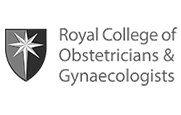Pelvic Organ Prolapse (Prolapse)
What is Pelvic Organ Prolapse?
Pelvic organs in women include the bladder, rectum and the female reproductive organs such as the vaginal canal and uterus. The vagina and uterus are located in the central part of the pelvis, with the bladder and the rectum located at the front and the back of the vagina respectively. These organs are supported by the pelvic floor muscles, fascia and ligaments, which can be weakened by the trauma of vaginal birth. Other conditions that weaken the support and contribute to the development of prolapse include chronic constipation, chronic coughing, obesity and congenital weaknesses of connective tissue. Pelvic organ prolapse is the dropping of these organs due to weakened support, causing them to bulge into or protrude through the vaginal opening, depending on the stage of the condition. Pelvic organ prolapse is often simply referred to as prolapse. It affects 1 in 3 women and 1 in 10 women will require surgery. About 1 in 3 women who undergo prolapse surgery will require repeat surgery for recurrence of prolapse. About 1 in 3 women needing prolapse surgery will also require incontinence surgery.
What are the symptoms of prolapse?
- Vaginal bulge, especially after heavy physical activities and prolonged standing
- Heavy dragging feeling in the pelvis or lower back
- Problem with inserting tampon
- Urinary frequency, urgency, incontinence and voiding problems such as hesitancy, slow intermittent urinary stream and incomplete bladder emptying
- Difficulty with bowel movements or incomplete evacuation, with the need to support the posterior vaginal wall or perineum to assist bowel emptying
- Feeling of being unsupported
- Discomfort during sexual intercourse
What are the different types of prolapse?
Prolapse can be classified according to which part of the body is dropping down, the vaginal wall or uterus. Vaginal wall prolapse can occur in the anterior vaginal wall (most common), posterior vaginal wall or even both at the same time. As the anterior vaginal wall is next to the bladder, it is often called a bladder prolapse or a cystocoele and similarly as the posterior vaginal wall is next to the rectum, it is also referred to as a bowel prolapse or a rectocoele. When the uterus drops it is referred to as a uterine prolapse, which can sometimes occur on its own with minimal weakness in vaginal walls but it is often associated with some degree of vaginal wall prolapse. When there is a combination of uterine and vaginal prolapse, it is referred as uterovaginal prolapse. After a hysterectomy, the top of the vagina where cervix (entrance to the uterus) used to be is called vaginal vault. When this area drops it is called a vaginal vault prolapse.
The severity of prolapse can be determined based on how far the organs have dropped. Grade I is mild and usually asymptomatic; Grade II is moderate and is when the prolapse reaches the vaginal opening, often at which is the point where it becomes symptomatic and noticeable; Grade III is when the prolapse protrudes well beyond the vaginal opening, and; Grade IV when the vaginal canal is completely everted.
What are the treatment options for prolapse?
When considering treatment options, various factors need to be taken into account including:
- Severity of symptoms
- Type of prolapse
- Severity of prolapse
- Desire for future pregnancy
- Previous repair surgery
- Sexual activity
- Age and general health
It is very common to have some degree of pelvic floor weakness following vaginal childbirth which can be considered normal (up to 40%) and often no treatment is required. Pelvic floor physiotherapy (Kegel exercise) can strengthen the pelvic floor muscles and help with mild weakness, and requires 6 weeks to 3 months of regular exercise for the effect to be noticeable. Lifestyle changes such as avoiding heavy lifting, managing constipation and weight control, can be helpful.
Non-surgical treatments:
Pessary: Pessaries are devices that are placed inside the vagina to support pelvic organs. It is fitted in the office and comes in various shapes and sizes. Pessaries can be used for short or long term treatment, in order to provide symptomatic relief, which also prevents progression of prolapse. The most commonly used pessary is the ring pessary. The pessary needs to be checked 4-6 monthly to monitor for pressure problems. Vaginal oestrogen cream is often prescribed to improve the health of vaginal skin and minimise irritation from the pessary. One can self-manage the pessary after learning how to remove and replace it. Pessaries may not work for everyone and it is sometimes necessary to trial different sizes and types of pessary. Sexual intercourse is usually possible with most pessaries, with a few exceptions.
Surgical options
There are a variety of surgical procedures to treat different types of prolapse. The most suitable procedure for a particular person will depend on a number of factors including age, general health, previous surgical repair, prolapse severity, type of prolapse and need to preserve uterus.
What are the surgical treatment options for prolapse?
Vaginal wall:
- Native tissue suture repair (Traditional vaginal repair)
Uterine / vault prolapse
Vaginal Surgery
- Vaginal hysterectomy with sacrospinous fixation
- Sacrospinous Hysteropexy
Robotic / Laparoscopic surgery
- Robotic / Laparoscopic Uterosacral ligament suspension +/- hysterectomy
- Robotic / Laparoscopic Paravaginal repair
- Robotic / Laparoscopic sacrocolpopexy +/- hysterectomy / subtotal hysterectomy / hysteropexy
Obliterative Surgery:
- Colpocleisis, vaginal closure surgery
- For sexually inactive, recurrent severe prolapse in elderly ladies with multiple medical co-morbidities
What are the risks with prolapse repair surgery?
- General surgical risks:
- Risk of anaesthesia, bleeding, infection, adjacent organ injury and development of blood clot in the leg that may travel to the lungs.
- Prolapse repair related risks:
- Repair not working or recurring later
- Prolapse occurring elsewhere
- Bladder dysfunction
- Bowel dysfunction
- Unexpected pelvic pain or pain with sexual intercourse
- Mesh related issues including mesh erosion, infection and possible pain
Why doesn’t some of the prolapse repair surgery last?
Prolapse occurs due to the weakening of tissue that supports pelvic organs, which consists of pelvic floor muscles, fasciae and ligaments. Pelvic floor muscles are weakened by a number of factors including partial or complete detachment of some of its muscle components from their bony insertion during childbirth , denervation from childbirth nerve injury, age related weakness and from decline of the anabolic effect of oestrogen after menopause. Pelvic floor muscle changes and nerve injuries cannot be repaired. Fasciae and ligaments are similarly weakened over time and are stretched, thinned, frayed and frail. It is these weakened tissues that we suture together during the traditional native tissue suture repair and the success of the surgical repair largely depends on the quality of these tissues. The success of repair depends on the strength of the tissue being sutured as the suture will tear through the tissue if it is too weak. In principle, the traditional native tissue suture repair is similar to the mending of a large hole in the elbow of a jacket. In patients with a large vaginal wall prolapse, the vaginal fasciae, which is otherwise a strong layer of supporting tissue under the vaginal epithelium, has a large defect, like a large hole in the fabric of the elbow of a jacket. The vaginal fascia around the defect is thin, weak and frayed, and just like how the mended elbow will not last forever, there is a 30%-50% chance that a native tissue anterior vaginal repair may fail over time. (There have been various attempts to reinforce the repair with grafts including the use of mesh with variable success, some with disastrous consequences. Vaginal repair using various “Vaginal Mesh Kit” which have been banned are no longer performed.)
What is the “best” prolapse repair surgery?
There are various repair procedures for different types of prolapse and the “best” procedure for a person is the one that best suits their individual needs. Sometimes the “best” treatment is to not have surgery at all and manage the prolapse conservatively with a vaginal pessary, either temporarily to defer surgery or on a long-term basis if the pessary satisfactorily manages presenting symptoms.
For isolated anterior or posterior vaginal wall prolapse, traditional native tissue suture repair remains the procedure of choice. However, anterior vaginal wall prolapse is renowned for its high chance of recurrence. When it comes to more severe multi-compartment prolapse, which is known to have a higher chance of recurrence, the traditional approach was to try a vaginal approach first, typically a vaginal hysterectomy with vaginal repairs and a sacrospinous fixation. If and when recurrence develops, a sacrocolpopexy would be performed. Sacrocolpopexy is recognised as a very effective procedure but historically it has been reserved for recurrences and for more severe prolapses, most likely because it used to be performed as an open surgery with a large abdominal incision, resulting in more postoperative pain and longer recovery. However, comparative studies have consistently shown that sacrocolpopexy is superior to vaginal sacrospinous fixation with a higher success rate. As sacrocolpopexy is increasingly performed laparoscopically and more recently robotically, it is now often considered as the preferred first line procedure for severe prolapses. Sacrocolpopexy is an operation that has been performed for many years and involves the use of mesh. There is a small additional risk associated with the use of mesh but is very different to the high risks associated with the use of mesh in “Vaginal Mesh Kit” procedures that are no longer performed. Robotic sacrocolpopexy works on a very different repair principle to that of native tissue suture repair in that it uses the strong non-absorbable mesh to suspend the top of the vagina, bringing it back up to its normal high position. The top of the vagina is often referred to as the vaginal apex and it is the cornerstone of vaginal support. Sacrocolpopexy is considered the “gold standard” procedure for apical support.
Prolapse and incontinence
Women with prolapse can also have urinary incontinence. There are two common types of urinary incontinence, stress urinary incontinence and urge urinary incontinence. A person can have elements of both types called mixed urinary incontinence. Stress urinary incontinence occurs due to weakness of the bladder neck and mid urethral support and the urinary leakage occurs with activities that cause sudden increase in abdominal pressure such as coughing, sneezing and jumping. When the symptoms of stress urinary incontinence are severe and unresponsive to non-surgical treatments, surgery can be considered. Urge urinary incontinence on the other hand, is related to overactivity of the bladder wall muscle and the urinary leakage occurs when one feels the need to void with a strong sense of urgency and inability to hold on. Treatment for urge incontinence is non-surgical through the use of vaginal Oestrogen therapy, bladder training and bladder relaxant. Women with both prolapse and stress incontinence may benefit from a combination of prolapse and continence surgery. Prolapse surgery may improve urgency but it is not the primary aim.
Some women may have stress incontinence to start with and with development of prolapse the stress incontinence may appear to improve. This is often described as the prolapse masking the urinary incontinence. It is also referred to as having occult incontinence which can becomes revealed when the prolapse is surgically corrected without a concurrent incontinence procedure. In patients with symptoms of urinary incontinence, a detailed urodynamic study can comprehensively assess bladder functions and identify occult incontinence and other bladder dysfunctions that are very important to know for preoperative planning.
Immediately after repair surgery, there could be temporary changes in bladder and bowel functions due to irritation and inflammation around these structures, which often resolves after period of healing.
How will sexual function be affected following prolapse repair surgery?
Literature supports improvement in sexual function following repair surgery, however there is a small chance that sexual intercourse can be more painful.
Helpful Links
Patient information from International Urogynecological Association















